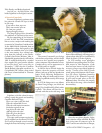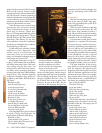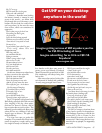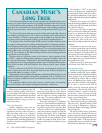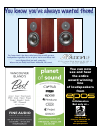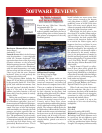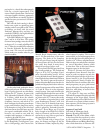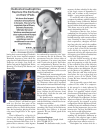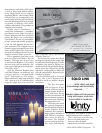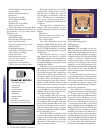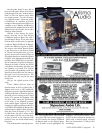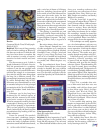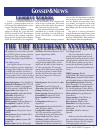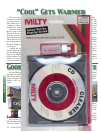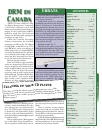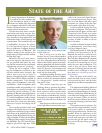
Feedback
Software
large orchestra and a choir of 150 voices,
as well as three hand-picked soloists,
tenor Hugh Smith, mezzo soprano
Stephanie Blythe, and baritone Mark
Oswald. They are accompanied by the
entire family of strings and woodwinds,
brass and percussion of all sorts, includ-
ing drums of different sizes, bells,
carillons and cymbals. They produce an
imposing mass of sound.
Despite such an abundance — I
nearly wrote overabundance — of timbres,
the composer never allows his music to
become pompous, and there resides his
genius. He pours it on, yet maintains
a just balance. For me it is remarkable,
at once intense and painful, gratifying
to the ear, and poignant for the emo-
tions it awakens. The composer’s use of
dynamics is part of its appeal, but so is his
choice of the English texts, drawn from
the works of celebrated American poets
who have trained a bitter eye on war.
Three quotations from Notes on the
poetic text which you’ll find in the CD
booklet: “When you hear the poetic texts
in An American Requiem, it is our belief
that each word of the nine poems has risen
from a great depth and carries the phosphor
trail of other works.”
And: “An American Requiem opens
with Walt Whitman, our democratic and
roving eye, which sees a ‘new-made double
grave.’” And further on: “This strange,
almost unbelievable, image conjured around
1863…floats up to us as a turbulent ghost
image that might have been written the
night of September 11th by a poet who lives
in Battery Park City.”
For too long the requiem has offered
privileged access only to the erudite, able
to understand dead languages. Thanks
to Brahms, who dared to add the ver-
nacular to the all-Latin Catholic liturgy,
and to those who followed his daring
innovation, a wider public can follow the
text and comprehend it. Requiems have
ceased to be opaque.
As for the music itself, it is of great
beauty, with a use of dynamics cal-
culated to touch our noblest, deepest
sentiments.
The Dies Irae opens
with the light use of per-
cussion, which sets up the
choppy rhythm which fol-
lows, with brass, drums
and the sforzando choir. All
the instruments are used to
punctuate most effectively
this magnificent aria.
The Latin verses touch
the spiritual dimension of
the relationship of humans
to the Supreme Being:
confusion, fear, resistance,
anger, sadness, but hope as
well. With few exceptions
these verses are sung by
the choir. The English
texts are sung by the solo-
ists, either individually
or together, and address at once the
understanding and the emotions.
Here is the tenor, in the Dies Irae:
Down a new made double grave.
Now nearer blow the bugles
and the drums strike more convulsive
SOLID LINK
“................ WOW, detail, and depth
of soundstage was immediately
improved..........”
Speaker cables and interconnects
using solid copper conductors.
Hand crafted in Canada by
ULTRA HIGH FIDELITY Magazine 73



